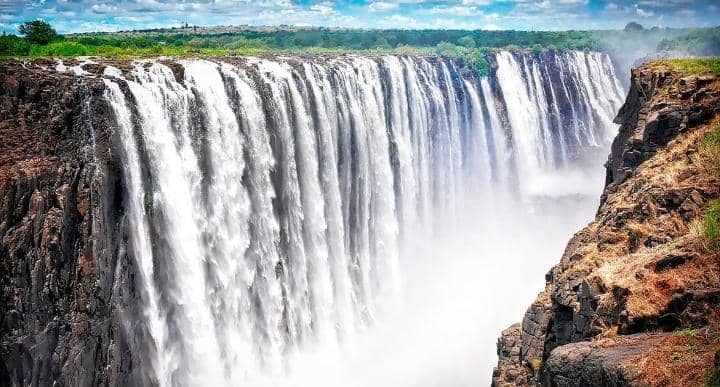Victoria Falls, known locally as Mosi-oa-Tunya, meaning “The Smoke That Thunders,” is one of the most breathtaking natural wonders in the world. Straddling the border between Zambia and Zimbabwe, it is renowned for its massive width of 1,708 meters and a height of up to 108 meters.
Although it is not the tallest or widest waterfall globally, its combination of height and width makes it the largest sheet of falling water, with a peak flow rate exceeding 5 million cubic meters per minute during the rainy season.
The falls were first documented by Scottish missionary David Livingstone in 1855, who named them in honor of Queen Victoria.
The area is rich in biodiversity, surrounded by lush rainforests that thrive on the mist generated by the falls. This unique ecosystem supports various wildlife, including rare species of birds and plants, making it a UNESCO World Heritage Site since 1989.
Victoria Falls is not just a visual spectacle; it is also a significant cultural site.
The indigenous people have revered the falls for centuries, and numerous legends surround its formation. The falls are divided into several sections, including the Devil’s Cataract, Main Falls, Rainbow Falls, and Horseshoe Falls, each offering a different perspective and experience for visitors.
Tourism plays a vital role in the local economy, with millions flocking to witness the majestic falls each year.
Activities such as bungee jumping, white-water rafting, and scenic helicopter flights provide thrilling ways to appreciate the falls’ grandeur.
The surrounding national parks enhance the experience, offering safaris and opportunities to explore the rich wildlife.
Victoria Falls immense volume of water, stunning landscapes, and cultural significance make it a must-visit destination for travelers seeking adventure and awe-inspiring views. Whether viewed from the misty edges or experienced through adventurous activities, Victoria Falls continues to captivate all who encounter its splendor.

